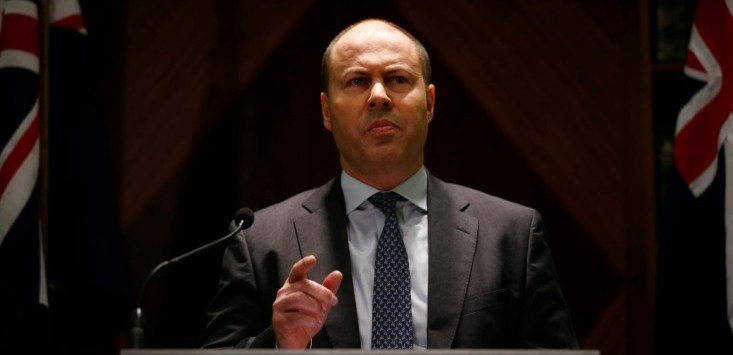
Treasurer Josh Frydenberg. Source: AAP/Daniel Pockett.
Small business owners facing bankruptcy will stay in control of their companies while restructuring debts under a Morrison government plan to overhaul Australia’s insolvency system.
On Thursday, Treasurer Josh Frydenberg unveiled a suite of insolvency reforms to protect small businesses from the fallout of the COVID-19 pandemic, saying Australia would move from a “rigid, one-size-fits-all ‘creditor in possession’ model to a more flexible ‘debtor in possession’ model”.
The reforms, which adopt aspects of the United States’ Chapter 11 bankruptcy process, will effectively allow insolvent companies with less than $1 million in liabilities to retain control and continue to trade while developing a plan to restructure their debts.
It would scrap the current model, whereby creditors appoint external administrators to oversee the affairs of insolvent small businesses, while retaining the ability for creditors to vote on debt restructuring plans.
A new liquidation process will also be implemented for small businesses with streamlined meeting and reporting obligations, which will be an option for companies that fail to get creditor approval for debt restructuring plans.
In an opinion piece published by the Treasurer and the Australian Financial Review on Thursday, Frydenberg said the changes would cover about three-quarters of businesses subject to insolvency proceedings each year.
“The new process will involve a small business restructuring practitioner helping the business prepare the plan, certify the plan to creditors, and oversee disbursements once the plan is in place,” Frydenberg said.
The Treasurer said temporary insolvency protections have granted a reprieve for businesses doing it tough during the pandemic, but that some would inevitably not survive once the measures expire at the end of the year.
“Some of these businesses will survive and others will not, but the new system will provide the best opportunity for viable businesses to adapt — and in doing so to generate the most efficient allocation of capital and labour as the economy strives to recover from this COVID-19 recession,” he said.
The federal government plans to implement the reforms from January 1, 2021.
How the new small business insolvency model works
Here’s how the new model will work.
- When an incorporated business with less than $1 million in liabilities becomes insolvent, a “small business restructuring practitioner” will help the company plan to restructure its debts.
- Directors will have 20 days to develop this plan while retaining control of their business, during which time creditors won’t be allowed to take action against the company.
- Creditors will then have 15 days to vote on the debt restructuring plan, including advisor remuneration.
- And then, if at least 50% of creditors by debt value vote in favour, the plan will be implemented, while if creditors vote the plan down the business can go into the existing voluntary administration system.
There are some additional safeguards too, such as a requirement for employee entitlements to be paid out in full before the plan is voted on by creditors, and anti-phoenixing measures preventing creditors related to directors from voting on restructuring plans.
A director or company will only be able to use the small business insolvency process once every seven years.
How did we get here?
The insolvency overhaul will be welcomed by small business ombudsman Kate Carnell, who effectively recommended reforms along these lines late last year, after undertaking a review of small business insolvency arrangements.
But the changes will also shift the balance of power between business owners, creditors and insolvency industry practitioners.
While creditors will still have final say on the outcome of restructuring plans, insolvency practitioners will have less power over the process than previously, although proceedings for larger companies will still operate under existing rules.
The government has been spurred into action by worries about what will happen to the small business sector in 2021, when existing government protection and stimulus measures expire, leaving directors to fend for themselves amid a recession and the lingering impact of the coronavirus crisis.
NOW READ: Insolvency and bankruptcy protections extended for businesses struggling with COVID-19


COMMENTS
SmartCompany is committed to hosting lively discussions. Help us keep the conversation useful, interesting and welcoming. We aim to publish comments quickly in the interest of promoting robust conversation, but we’re a small team and we deploy filters to protect against legal risk. Occasionally your comment may be held up while it is being reviewed, but we’re working as fast as we can to keep the conversation rolling.
The SmartCompany comment section is members-only content. Please subscribe to leave a comment.
The SmartCompany comment section is members-only content. Please login to leave a comment.